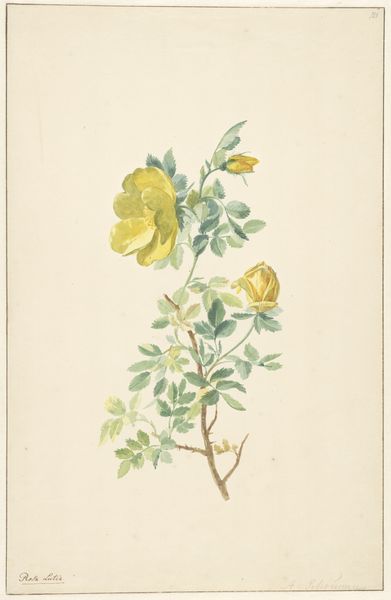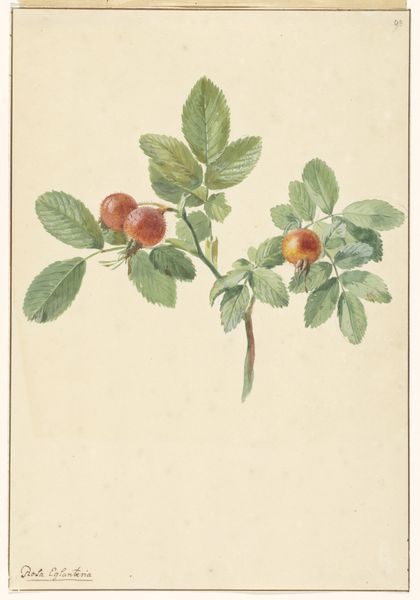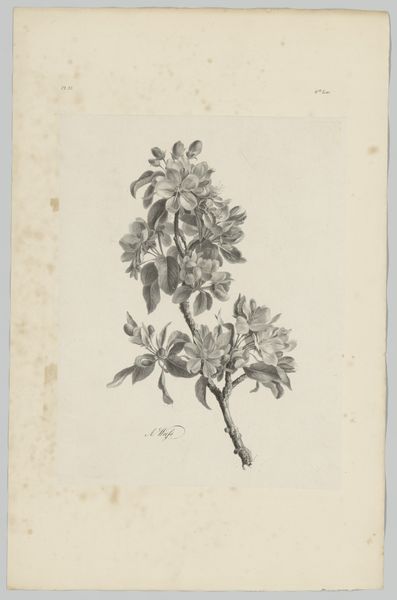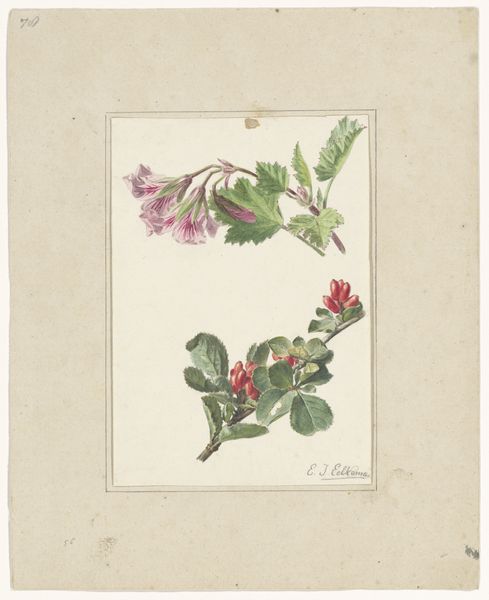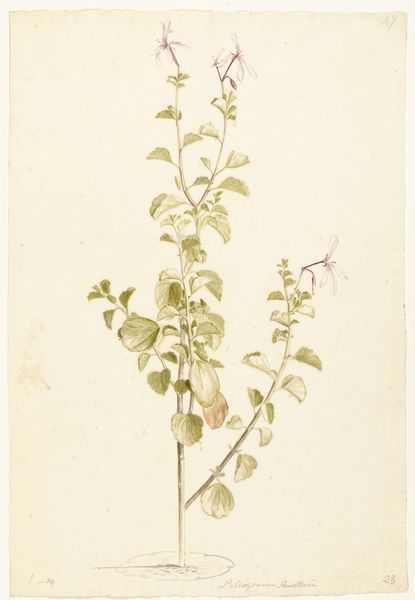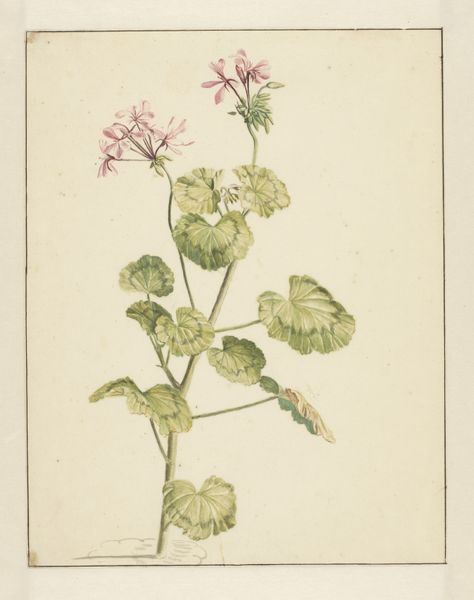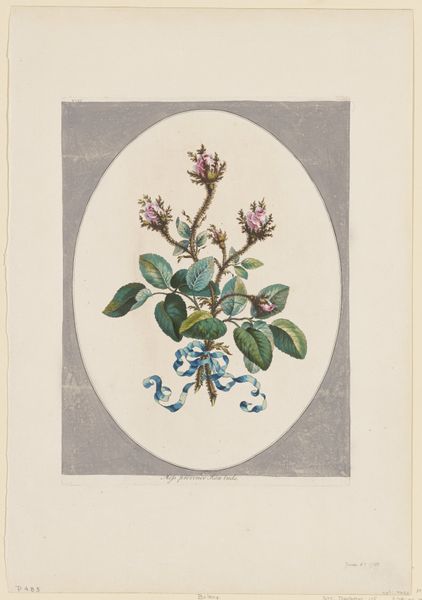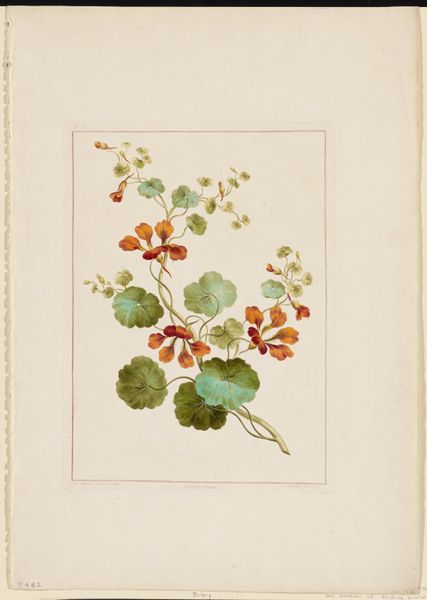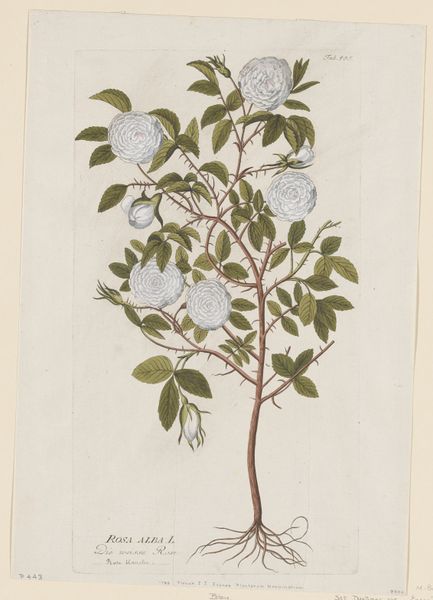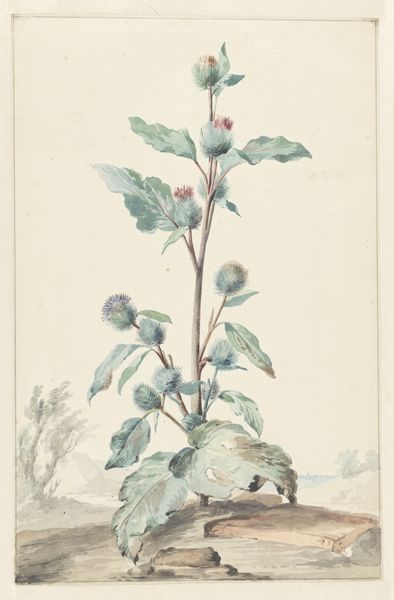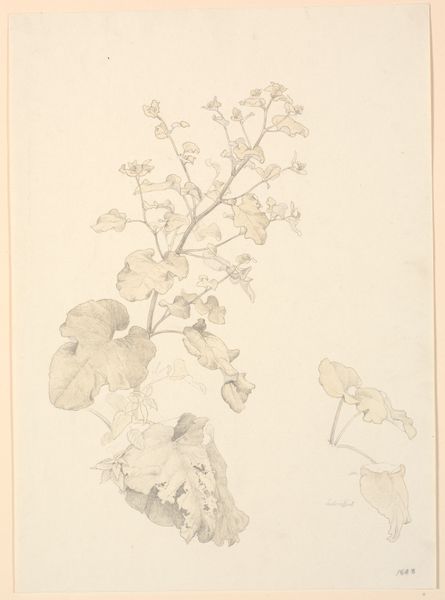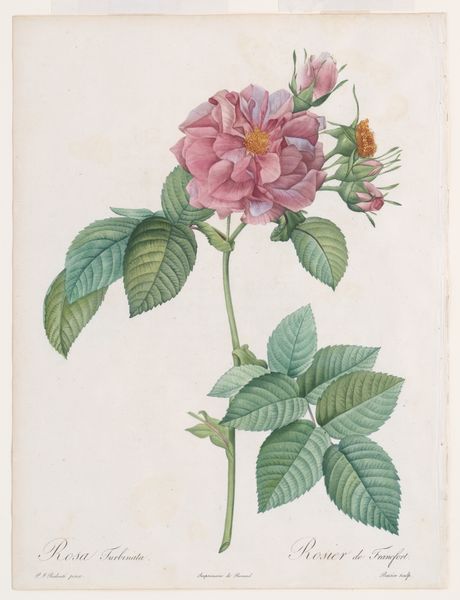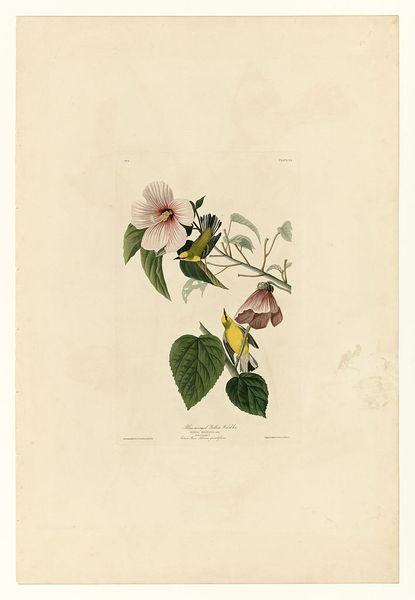
Dimensions: height 418 mm, width 270 mm
Copyright: Rijks Museum: Open Domain
Willem van Leen created this watercolor and gouache painting of a gooseberry plant in the late 18th or early 19th century. Botanical illustration like this one was very fashionable in Europe during this period. The painting's meaning is tied to the rise of scientific inquiry and the expanding global reach of European powers. Accurate depictions of plants were valuable for their potential medicinal or economic uses. The gooseberry itself, while native to Europe, might have been of interest for cultivation in other parts of the world. Dutch artists and scientists were actively involved in documenting and classifying flora from around the globe, reflecting the Netherlands' role as a major trading nation. To understand this work fully, we might consult herbals and botanical texts from the period, tracing the circulation of knowledge about plants and their properties. The history of science, in this case botany, reveals the social and institutional contexts that shaped artistic production.
Comments
No comments
Be the first to comment and join the conversation on the ultimate creative platform.
